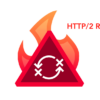The network access control market is forecast to exceed $1 billion in less than four years.
The market for network access control products and services is expected to grow 22 percent to reach $1.061 billion by 2017, the Ogren Group said in its latest vendor market forecast and market analysis report. The market for NAC products and services was $392 million in 2012, according to the group.
Cisco, ForeScout, and Juniper Networks together account for more than 70 percent of the market share, making them “clear leaders,” according to the Ogren Group, an industry analyst and research firm. Other vendors in the market include Aruba Networks, Bradford Networks, StillSecure, and TrustWave.
“The NAC market has not only revived, but is experiencing a strong resurgence,” said Eric Ogren, president of the Ogren Group.
Regulatory compliance requirements such as PCI-DSS, ISO 27001, HIPAA, and COBIT are also driving interest in NAC products and services.
IT executives have accepted that security incidents are inevitable and are prioritizing broad-based risk management efforts. As a result, the analysts predicted the market will tweak its name towards something along the lines of “continuous endpoint compliance” to reflect the new capabilities and focus of modern NAS products and services.
NAC is no longer just about roles-based user and device authentication and guest management, Ogren Group said. Instead, the market has evolved to include pre- and post-connect features to assess, characterize and correct operating system and software configurations in real-time. The idea is to give organizations a way to identify unhealthy endpoints, such as systems missing important security updates, running unauthorized software, or having other high-risk elements, and segment them away from the rest of the network.
As more organizations adopt bring-your-own-device policies and wireless initiatives, there is greater demand for continuous endpoint compliance, or knowing what is running on the endpoint at all times. Organizations need real-time visibility into all the devices connecting to the network and to be able to enforce security policies on the devices.
“The NAC roots of segmenting guest and unhealthy endpoints from sensitive data are fueling growth,” Ogren said.














